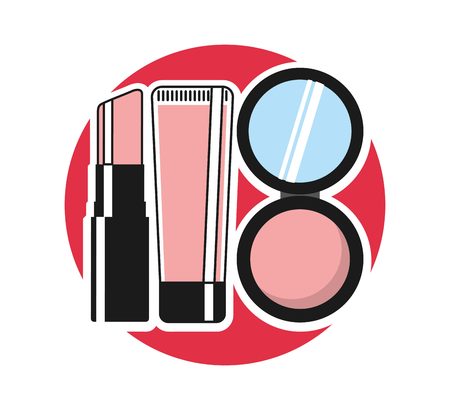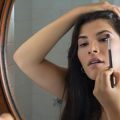1. Understanding the Basics: What Is Concealer and What Is Foundation?
When building your makeup routine, its easy to get confused between concealer and foundation. While both are used to even out your skin tone, they serve different purposes and have unique textures and coverage levels. Knowing when and how to use each can seriously elevate your makeup game.
What Is Foundation?
Foundation is the base of your makeup. Its designed to create an even skin tone across your entire face. It comes in various forms—liquid, cream, powder, or stick—and offers different types of coverage from sheer to full. Depending on the formula, it can also offer benefits like hydration, oil control, or SPF protection.
What Is Concealer?
Concealer is a more targeted product used after foundation (in most cases) to cover specific areas like blemishes, dark circles, redness around the nose, or pigmentation spots. It usually has a thicker texture and higher pigment concentration compared to foundation for better coverage in small areas.
Main Differences Between Concealer and Foundation
The chart below breaks down the core differences between concealer and foundation:
| Feature | Foundation | Concealer |
|---|---|---|
| Main Purpose | Create an even base across the entire face | Spot-correct imperfections like blemishes and dark circles |
| Creaminess & Texture | Lighter texture for all-over application | Thicker texture for precise application |
| Coverage Level | Varies from sheer to full coverage | Typically medium to full coverage in small areas |
| Entire face and neck area | Targeted spots (under eyes, blemishes, redness) | |
| Liquid, powder, stick, cream | Cream, liquid, stick, pot | |
| Matches overall skin tone | Slightly lighter for brightening under eyes or matching spot areas exactly |
A Simple Way to Remember It:
If youre thinking of painting a wall—foundation is like the primer that evens everything out before color goes on. Concealer is like the touch-up paint you use for tiny marks or dents after priming.
2. When to Use Foundation in Your Routine
Foundation is the first major step in most makeup routines after skincare and primer. Its main job is to even out your skin tone and create a smooth, consistent base for the rest of your makeup. Think of it as the canvas that sets the stage for everything else—from blush to bronzer to concealer.
The Role of Foundation
Foundation helps blur minor imperfections, reduce redness, and balance out uneven pigmentation. While it doesn’t fully cover spots or dark circles (that’s where concealer comes in), it does provide an overall polished look that makes your skin appear more uniform and healthy.
When to Apply Foundation
In a typical makeup routine, foundation is applied after prepping your skin with moisturizer and primer. Here’s a simple step-by-step breakdown:
| Step | Product | Purpose |
|---|---|---|
| 1 | Moisturizer | Hydrates and preps skin |
| 2 | Primer | Smooths texture and extends wear |
| 3 | Foundation | Evens out skin tone and creates a base |
| 4 | Concealer | Covers specific areas like blemishes or under-eye circles |
Choosing the Right Foundation Type
The type of foundation you use can depend on your skin type and desired finish:
| Skin Type | Recommended Foundation Type |
|---|---|
| Oily Skin | Matte or powder foundation |
| Dry Skin | Dewy or hydrating liquid foundation |
| Combination Skin | Satin-finish liquid foundation |
| Sensitive Skin | Mineral or fragrance-free foundation |
Tips for Applying Foundation Like a Pro
- Use a damp beauty sponge or foundation brush for seamless blending.
- Start from the center of your face and blend outward for a natural finish.
- A little goes a long way—build coverage only where needed.
- Set with translucent powder if you want longer wear or have oily skin.
Using foundation correctly helps create a flawless base that makes the rest of your makeup look better and last longer. It’s an essential part of achieving that smooth, radiant complexion everyone loves.

3. When to Use Concealer and How It Works Best
Concealer is your go-to product for spot-treating specific areas that need extra coverage. Unlike foundation, which is meant to even out your overall skin tone, concealer is designed to hide imperfections like dark circles, blemishes, redness, and hyperpigmentation. Knowing when and how to use concealer can make a big difference in how natural and flawless your makeup looks.
What Concealer Does Best
Here’s a quick breakdown of the most common uses for concealer and what type works best:
| Concern | Type of Concealer | Application Tip |
|---|---|---|
| Dark Circles | Creamy or liquid with peach or orange undertones | Apply in a triangle shape under the eyes and blend gently with a damp sponge |
| Blemishes | Thicker, matte formula close to skin tone | Dab directly on blemish using a clean brush or fingertip, then lightly tap to blend |
| Redness (e.g., around nose) | Green-tinted or neutralizing concealer | Apply before foundation to cancel out redness, then layer with skin-toned concealer if needed |
| Hyperpigmentation or dark spots | Full-coverage liquid or cream concealer | Dab onto spots with precision brush and blend edges into surrounding skin |
When to Apply Concealer in Your Routine
The order of application can depend on the look youre going for and the type of foundation you’re using. A general rule of thumb:
- If youre using a sheer or light-coverage foundation: Apply concealer after foundation so you dont accidentally wipe it away.
- If youre using full-coverage foundation: You may need less concealer, so apply foundation first and then add concealer only where needed.
Pro Tips for Best Results
Select the Right Shade
Use a shade one to two tones lighter than your skin tone for under-eye brightening. For blemishes or redness, match as closely as possible to your natural skin tone for seamless blending.
Blend Like a Pro
A damp beauty sponge is great for blending under-eye concealer without creasing. For blemishes, use your fingertip or a small synthetic brush to press the product in place without disturbing the area.
Set It to Last All Day
Lightly set your concealed areas with translucent powder to prevent creasing and ensure all-day wear—especially important for under eyes and oily spots.
By understanding how and when to use concealer effectively, you can target problem areas without overloading your entire face with product. This helps create a more natural, fresh-faced finish while still giving you the coverage you need where it matters most.
4. Concealer Before or After Foundation? Let’s Clear It Up
One of the most common questions in any makeup routine is: Should you apply concealer before or after foundation? The answer actually depends on your skin type, the kind of coverage you’re aiming for, and the specific concerns youre trying to address. Let’s break it down so you can choose what works best for your skin.
💡 General Rule of Thumb
In most cases, it’s recommended to apply foundation first, then go in with concealer where needed. This way, your foundation already provides a base layer of coverage, which means you’ll end up using less concealer overall—saving product and keeping your makeup from looking cakey.
🎯 When to Apply Concealer Before Foundation
If you’re targeting very specific areas like intense dark circles, redness, or pigmentation spots, applying concealer first can offer better correction—especially if youre using a color-correcting formula. Heres a quick guide:
| Skin Concern | Apply Concealer… | Why? |
|---|---|---|
| Dark Circles (with color corrector) | Before Foundation | Cancels out discoloration before blending with foundation |
| Blemishes or Acne | After Foundation | Foundation may cover some imperfections—concealer adds precision |
| Redness Around Nose or Chin | After Foundation | You’ll need less concealer once foundation evens things out |
| Dullness or Uneven Skin Tone | Before Foundation (Color Corrector) | Brightens and evens tone before layering foundation |
🔄 Layering Tips for a Natural Finish
- Use a damp beauty sponge to blend concealer seamlessly into the foundation.
- Avoid over-applying. Start with a small amount and build only where needed.
- Set with translucent powder, especially under the eyes or on oily areas.
🧴 Product Formulas Matter Too
The type of concealer and foundation you use can also affect the order:
| Product Type | Best Application Order | Notes |
|---|---|---|
| Liquid Foundation + Cream Concealer | Foundation First | Avoids smudging or moving product around too much |
| Powder Foundation + Liquid Concealer | Concealer First | Powder can set the liquid concealer in place afterward |
| Tinted Moisturizer + Light Coverage Concealer | Tinted Moisturizer First | Keeps look natural and breathable for everyday wear |
No matter what order you choose, always remember that your makeup routine should work for you. Play around with different techniques until you find the combo that fits your skins needs and your personal style.
5. Choosing the Right Products for Your Skin Type
When it comes to picking the perfect concealer and foundation, understanding your skin type is key. The right formula can enhance your natural beauty, while the wrong one might cause creasing, breakouts, or dryness. Whether you have oily, dry, sensitive, or combination skin, here’s how to choose products that work best for you.
Know Your Skin Type
If youre not sure what your skin type is, heres a quick guide:
| Skin Type | Common Traits |
|---|---|
| Oily | Shiny T-zone, enlarged pores, prone to breakouts |
| Dry | Flaky patches, tight feeling, dull appearance |
| Sensitive | Easily irritated, redness, reacts to new products |
| Combination | Oily in some areas (usually T-zone), dry in others |
Selecting Foundation Based on Skin Type
Your foundation sets the tone for your entire look. Here’s what to look for:
Oily Skin
Go for oil-free, mattifying foundations. Look for labels like “long-wear” or “shine control.” Powder and liquid-to-matte formulas are great choices.
Dry Skin
Choose hydrating or dewy-finish foundations. Cream and liquid formulas with moisturizing ingredients like hyaluronic acid can help maintain a healthy glow.
Sensitive Skin
Opt for fragrance-free and hypoallergenic foundations. Mineral-based formulas are often gentler and less likely to cause irritation.
Combination Skin
You might need to mix products or use different ones on different areas of your face. A lightweight liquid foundation with a natural finish usually works well.
Selecting Concealer Based on Skin Type
Concealers are all about targeted coverage — under-eye circles, blemishes, redness — so choosing the right texture matters just as much as shade match.
Oily Skin
A matte or oil-free concealer will stay put longer and prevent shine. Stick or cream-to-powder formulas work well.
Dry Skin
Creamy or hydrating concealers help prevent flaking and settling into fine lines. Look for words like “moisturizing” or “radiant.”
Sensitive Skin
Avoid heavy fragrances and opt for clean beauty brands with gentle ingredients. Liquid formulas tend to be less irritating than thick sticks or pots.
Combination Skin
You may need more than one type of concealer — a lightweight one for under eyes and a matte one for blemishes.
Quick Reference Table: Best Formulas by Skin Type
| Skin Type | Foundation Formula | Concealer Formula |
|---|---|---|
| Oily | Oil-free, Matte Liquid/Powder | Matte Stick or Cream-to-Powder |
| Dry | Dewy Liquid/Cream with Hydration Boosters | Creamy or Moisturizing Liquid |
| Sensitive | Mild Mineral-Based, Fragrance-Free Liquid | Lighter Liquid, Hypoallergenic Options |
| Combination | Naturally Finished Lightweight Liquid | Duo Approach: Light Under-Eye + Matte Spot Coverage |
The more you understand your skins needs, the easier it becomes to choose makeup that feels good and looks amazing all day long.
6. Pro Tips for a Flawless Finish
Blending concealer and foundation like a pro doesn’t have to be complicated. With the right tools, techniques, and a little insider know-how, you can create a seamless, natural-looking base that lasts all day. Here are some expert tips to help you get that flawless finish:
Know the Right Order
The order in which you apply your products can make a big difference. Heres a quick guide:
| Skin Concern | Apply First |
|---|---|
| Mild imperfections (even skin) | Foundation first, then concealer |
| Dark circles or blemishes | Concealer first, then foundation to blend |
Use the Right Tools
- Damp beauty sponge: Ideal for blending both concealer and foundation for a skin-like finish.
- Flat brush: Great for applying foundation evenly over large areas.
- Tapered brush: Perfect for precision concealing around the nose and under eyes.
Select the Best Formulas for Your Skin Type
Your skin type plays a huge role in how well your makeup blends and lasts. Check out this quick guide:
| Skin Type | Foundation Type | Concealer Type |
|---|---|---|
| Oily | Matte liquid or powder foundation | Creamy or matte finish concealer |
| Dry | Dewy or hydrating liquid foundation | Luminous or serum-based concealer |
| Combination | Satin finish foundation | Creamy concealer with light hydration |
Tapping vs. Swiping: The Technique Matters
Avoid swiping your products across the skin—this can cause streaks and uneven coverage. Instead, use tapping motions with your sponge or brush to press the product into the skin. This technique helps melt the product seamlessly into your complexion.
Bake Strategically (If Needed)
If you want extra staying power—especially under the eyes—try “baking” with a loose translucent powder. Lightly set your concealer by pressing powder on top with a damp sponge, let it sit for 5–10 minutes, then dust off the excess. This helps prevent creasing and extends wear time.
Mist It All Together
A setting spray is your final secret weapon. After applying both foundation and concealer, mist your face with a hydrating setting spray. It melts everything together for a more natural look and locks in your makeup for hours.
Your Flawless Finish Checklist:
- Dampen your beauty sponge before use.
- Select shades that match your undertone.
- Tap instead of swipe for smooth blending.
- Bake only where needed (like under eyes).
- Mist to set and refresh throughout the day.
Nailing the balance between concealer and foundation takes practice, but these tips will get you one step closer to that airbrushed glow—without looking cakey or overdone.

